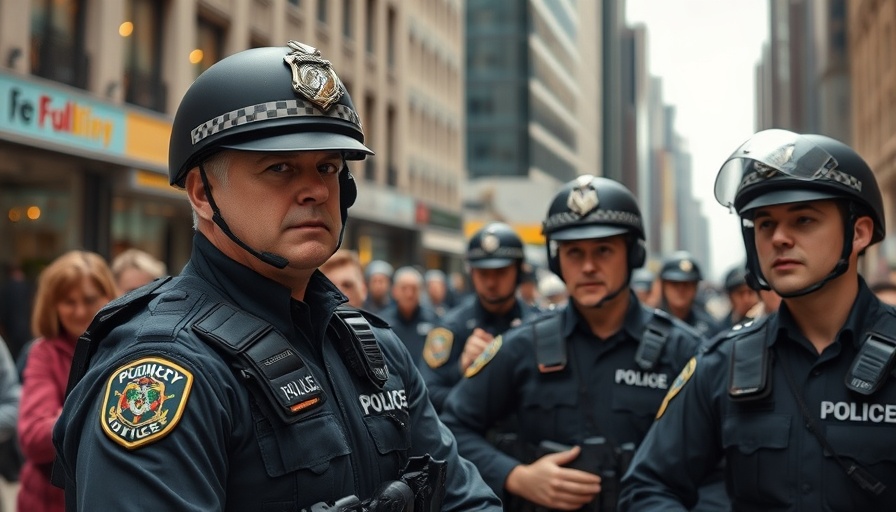
The Push for More Police: Dallas' Controversial Measures Explained
In a move that has stirred debate and concern within the community, Dallas residents recently voted to increase the size and budget of the police force through the Dallas HERO initiative. The background of this proposition, fueled by fears of rising crime despite evidence to the contrary, raises crucial questions about policing, public safety, and the interpretation of crime statistics.
Crime Rates and Perceptions
While proponents like Pete Marocco, executive director of Dallas HERO, claimed the city was descending into chaos, actual crime statistics paint a different picture. Violent crime rates in Dallas have been on a downward trajectory, with low homicide rates reported. Yet, the narrative around public safety is often shaped more by perception than reality. Richard Briffault, a law professor at Columbia, noted the fear surrounding crime overshadows objective statistics, creating a situation where voters reacted more to perceived threats than actual data.
The Impact of Proposition U
Proposition U, approved by voters in the November 2024 election, mandates the Dallas Police Department (DPD) attain a minimum staffing level of 4,000 officers, an ambitious goal that some experts view as impractical without substantial funding and resources. The current city budget increases police salaries and adds funds for recruiting new officers but falls short of the charter's demands, raising concerns about compliance and long-term sustainability.
Legal and Financial Repercussions
The vote to strip Dallas of its governmental immunity through Proposition S raises additional legal and financial implications for the city. Experts have warned that increased liabilities from lawsuits could significantly affect city finances and its ability to fund essential services like libraries and parks. This shift poses a challenge: how can Dallas maintain community resources while meeting public safety demands?
Local vs. National Crime Narratives
Dallas's situation reflects a broader trend seen across major U.S. cities, where local political narratives echo national sentiments regarding crime. With figures like former President Donald Trump portraying cities as overrun with violence, it’s easy to see how fear influences local politics. This environment can create pressure for local officials to act decisively, yet it often leads to measures that may not align with broader community desires—for instance, the push for increased police presence in the face of declining crime.
Community Division and Dialogue
The Dallas HERO initiative has not only led to policy changes but has also exposed divisions within the community. Support for increased policing is often correlated with areas experiencing higher crime rates, while wealthier neighborhoods may resist such measures. City Council member Carolyn King Arnold highlighted this disparity, suggesting that misconceptions about crime fueled the push for HERO's measures in less affluent areas. Understanding these dynamics is essential for fostering productive community dialogue on public safety.
Future Predictions: What Does This Mean for Dallas?
As Dallas continues to implement the HERO proposals, the long-term effects remain uncertain. Increased police, while potentially improving response times, might not address the root causes of crime. Meanwhile, if the city fails to comply with the new mandates adequately, it could face significant financial challenges. Experts predict that the city must balance public safety needs with fiscal responsibility, ensuring that resources are not disproportionately allocated to policing at the expense of essential community services.
Conclusion: Navigating a Complex Future
The ongoing debate surrounding Dallas HERO highlights the complexities of public safety initiatives and the multitude of factors influencing crime perceptions. Engaging the community and evaluating the effectiveness of proposed measures are vital steps in ensuring the safety of all Dallas residents.
 Add Element
Add Element  Add Row
Add Row 



Write A Comment